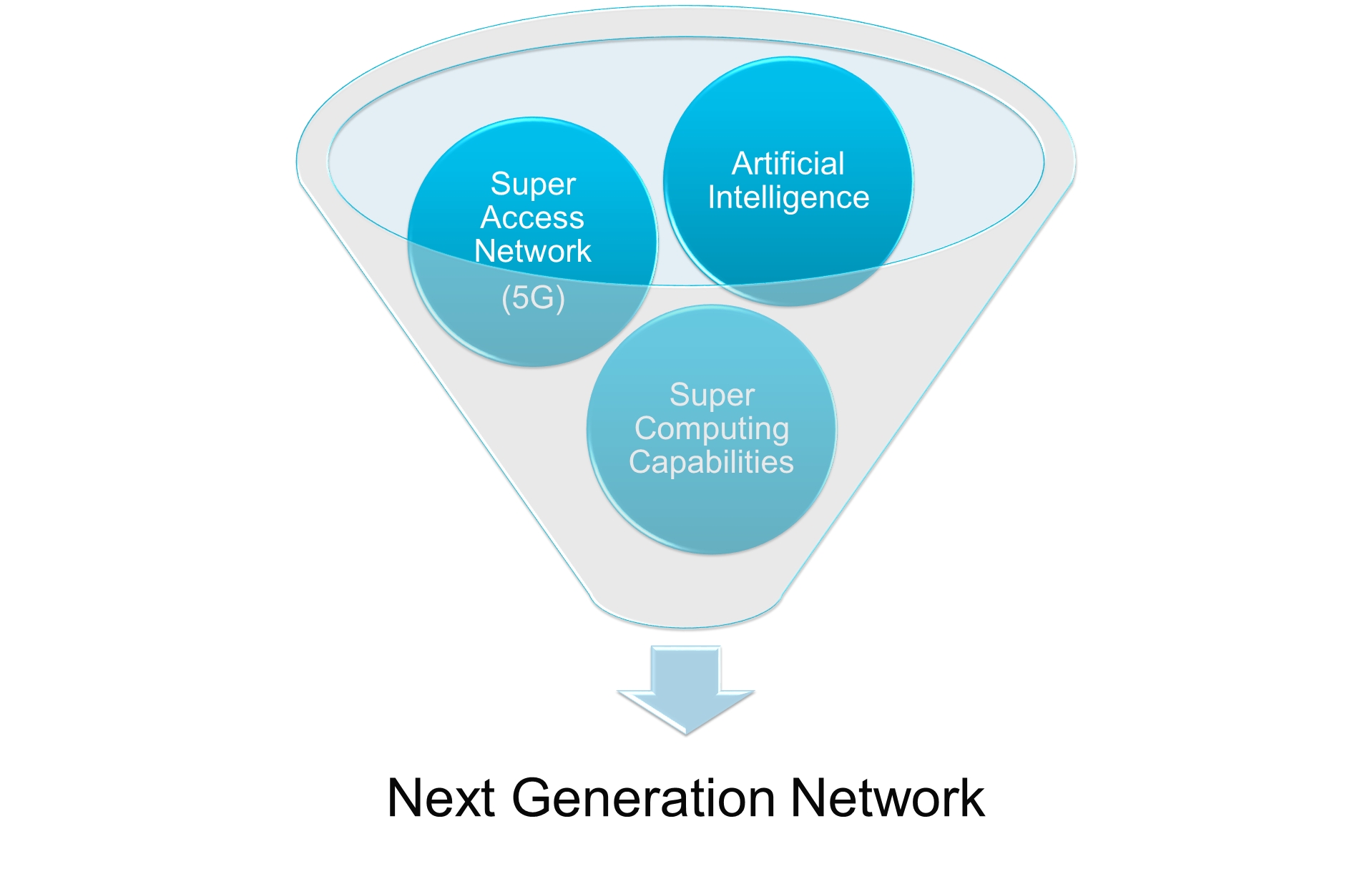Industry Thought Leadership
Next Generation 5G Mobile Network
An Essential Element of the Telecommunications Digital Transformation
December, 2017
Today, telecommunications form an integral part of the lives of millions of people around the world; a situation which is expected to continue and become even more undeniable in the future. Accordingly, together with the upcoming needs for Smart Cities and Internet-of-Things (IoT), the anticipated challenges of the future are so tremendous that there is a vastly increased need for a new next generation network with even further enhanced capabilities.
1) DIGITAL TRANSFORMATION – THE NEXT TECHNOLOGICAL REVOLUTION
All Industries (verticals) are moving towards the “Digital Transformation”:
- Schools/Education: Number of Students are exponentially increasing – do we keep building “legacy” schools?
- Financial Sector: Number of Financial transactions and outlets needed are exponentially increasing – do we keep investing in “legacy” financial systems and outlets or adopt and be open to new “digital” currencies and transactions
- Industries/Factories: Digital Transformation is not an option.
Consequently, that Digital Transformation leads to the next technological revolution. In our analysis, we see that this technological revolution is driven by three main stages - as illustrated in Figure 1:


- The Digital Lifestyle: The Boundaries between the Digital-Physical systems is merging and is driving life & business automation
- Automation & Efficiency: That inter-dependency between the Physical and the Digital system will come to a point where the automation of such interaction will become inevitable. We foresee that the Automation of everything has the potential of transforming the economy and society. That is because this automation has the ability to basically create more time through adding more efficiency to everything.
- Next Generation Network: With this huge automation, comes new needs and requirements. The Fundamental digital needs demand radically new network architecture from the Telecom Operators. These needs range from super speeds, to super capacity to very low latency. All of this leads to what we call the Next Generation Network.
Many Telecommunications Operators are already charting their way towards this Digital Transformation.
“As explained by our CEO, organizations are required to work on three fronts in order to ensure sustainable Digital Transformation (DT); 1) (D)SP (Digitizing services provided by the firm), 2) (DS)P (providing digitized services to other firms), 3) both to be supported by an NGN infrastructure,” said Saleem AlBlooshi. du’s Chief Infrastructure Officer. “du’s recent announcement of Restructuring its organization towards the above vision is driven by these three fronts. Similarly, the Infrastructure Strategy is also being aligned to deliver such NGN Infrastructure at an optimized cost, fast-to-market and with the best -in-class quality”.
2) THE NEXT GENERATION NETWORK
In our view, we see that the next generation network is a combination of three crucial components:
- A super Access Network – the next generation 5G Network
- A super computing capabilities that are getting closer and closer to the end user – this is what we technically call the “Edge Cloud”
- A super brain – which is the “Artificial Intelligence” capabilities on top of the above two crucial components
- To start with, 5G will represent a purpose-built technology, designed and engineered to facilitate connected devices as well as automation systems. In many ways, 5G will be a facilitator and an accelerator of the next industrial revolution, often referred to as Industry 4.0. The 5G mobile network should be seen as the overall future solution to providing wireless access to people and devices. It is not about simply providing a super high-speed pipe, it is actually about a combination of use-cases that will drive the 5G.
For many use cases, Latency will be of utmost importance and hosting the apps on the traditional cloud computing centers will not be an option. Instead, processing will have to be done “at the edge.” Edge computing, in turn, will create new value for locations scattered around the network that can do the processing, and mobile operators have some advantages (real estate, power sources, high bandwidth connectivity, low-latency networks, incentives to grow a role in edge computing and applications requiring edge computing) that could be leveraged to create a role in the new business.
Artificial Intelligence capabilities when added on top of the above two NGN Components, will basically evolve the concept of “autonomic network management” towards “cognitive network management”. In the “autonomic network management”, the concept of “the selves” was introduced, in which network management is expressed through a mixture of the approaches including: self-awareness, self-configuration, self-optimization, self-healing and self-protection. With the advancements of the infrastructure technology for accommodating the next generation of networks, the next level of network management has to incorporate the flexible manipulation of network resources and leverage it with the number of users, the network traffic, the SLAs, and the demanded system performance. And this would basically introduce the “cognitive network management”.

From Data Analytics perspective, Artificial Intelligence Computing techniques will also have a huge role in the future next generation network. We as Operators have access to a collection of data sets (i.e., these data can be highly dimensional, heterogeneous, complex, unstructured and unpredictable) that are so large and complex that the traditional data processing and analysis approaches cannot be employed due to their limited processing space and processing time. Artificial Intelligence will add new Computational techniques and approaches that will play a very crucial role in the big data analysis. It enables the analytics agent to computationally process and analyze the historical and real-time data, and eventually finds out and explain the underlying patterns, correlations, as well as to intensely understand the specific tasks. The computational analysis tools and methodologies convert the Operator’s massive amount of raw data (unprocessed, structured/unstructured) into meaningful data/information.
3) SUMMARY
Digital Transformation is a must. Organizations are required to work on three fronts in order to ensure sustainable Digital Transformation (DT); 1) (D)SP (Digitizing services provided by the firm), 2) (DS)P (providing digitized services to other firms), 3) both to be supported by an NGN infrastructure. That Digital Transformation leads to the next technological revolution, which requires radically new network architecture from the Telecom Operators. These needs range from super speeds, to super capacity to very low latency. All of this leads to what we call the Next Generation Network.
In our view, we see that the next generation network is a combination of three crucial elements:
- A super Access Network – the next generation 5G Network
- A super computing capabilities that are getting closer and closer to the end user – this is what we technically call the “Edge Cloud”
- A super brain – which is the “Artificial Intelligence” capabilities on top of the above two crucial components
We believe that the next generation network with all its three components will have the potential of transforming the economy and society.

